The True Factors Driving Your Sewer Line Replacement Cost
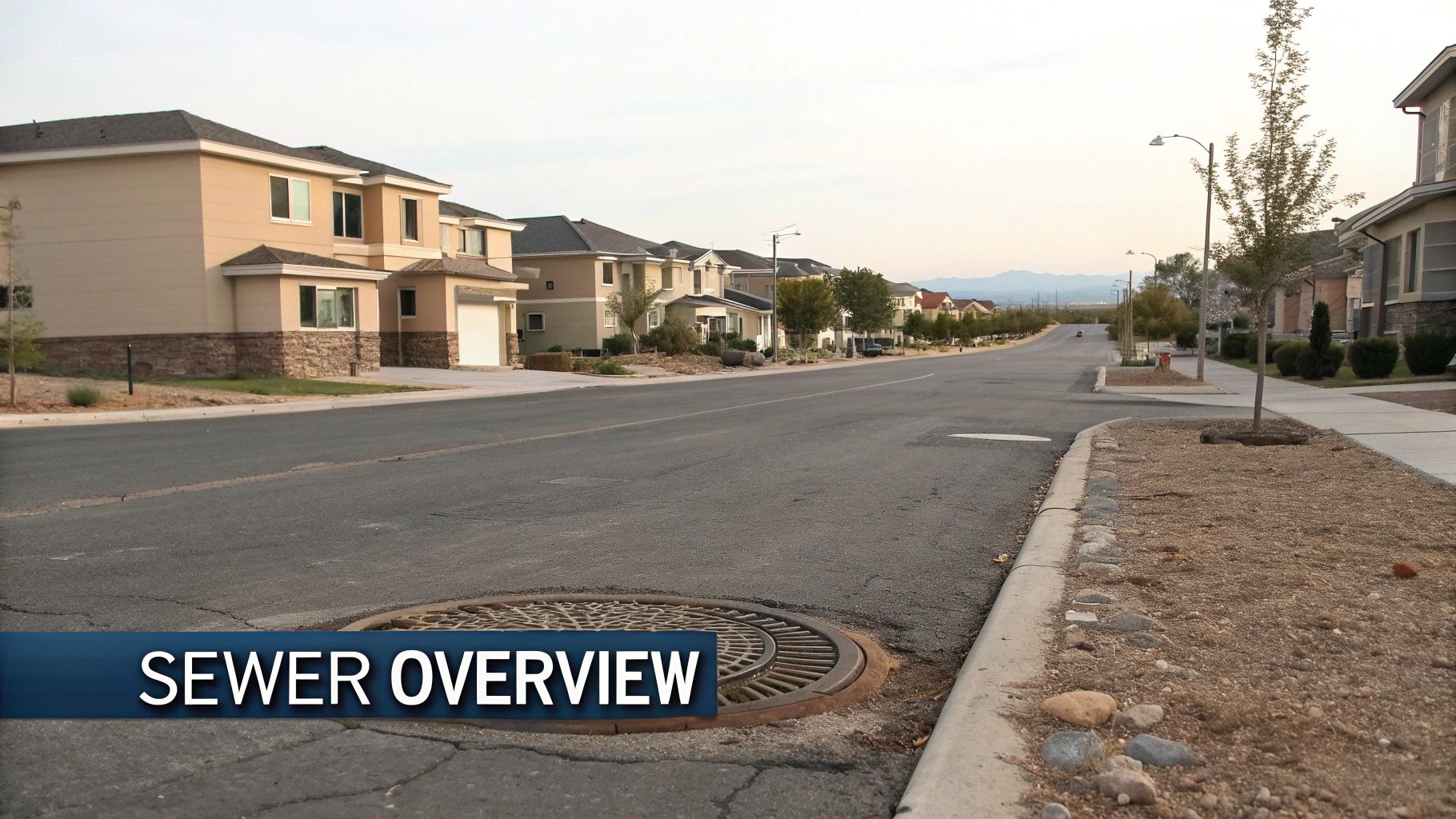
Replacing a sewer line is a major home improvement project, and understanding the factors influencing the cost is essential. Homeowners need to be prepared for a spectrum of potential costs, not just one fixed price. A primary factor is the pipe material. Similar to choosing flooring, each material has its own cost and characteristics.
Material Selection and Its Impact on Cost
PVC pipes are generally the most budget-friendly, starting at approximately $4.50 per linear foot. For increased durability and longevity, copper pipes are an option, though considerably more expensive at up to $85 per linear foot. This price difference emphasizes the need to balance budget with long-term value. You can explore additional details on our sitemap. The depth of the existing pipe also plays a significant role. Deeper pipes necessitate more excavation, increasing both labor and equipment expenses.
Property Challenges and Their Influence
Existing conditions can greatly affect your project. Consider a pipe entangled with tree roots. This common issue adds significant complexity. Root intrusion requires specialized equipment and expertise for removal, typically adding between $100 and $600 to the total cost. Similarly, soil composition can be either helpful or problematic. Rocky or clay-heavy soil presents more excavation challenges than loose, sandy soil, potentially requiring specialized equipment and extending project timelines.
Labor, Location, and Other Cost Considerations
Labor costs are another key component, varying based on plumber experience and location. These costs typically fall between $150 and $500 per hour. In densely populated urban areas, rates may be higher due to increased demand and higher cost of living. Obstacles like concrete driveways or patios add further complexity. Breaking through these surfaces requires additional equipment and labor, impacting the overall cost. Statistically, the average sewer line replacement cost is about $3,319, with a potential range from $225 to $10,000. This range depends on factors like pipe length, material, location, and additional services. For more detailed cost breakdowns, consult resources like ANGI. Understanding these varied factors enables informed decisions and productive discussions with contractors.
Trenchless vs. Traditional: The Real Cost Comparison
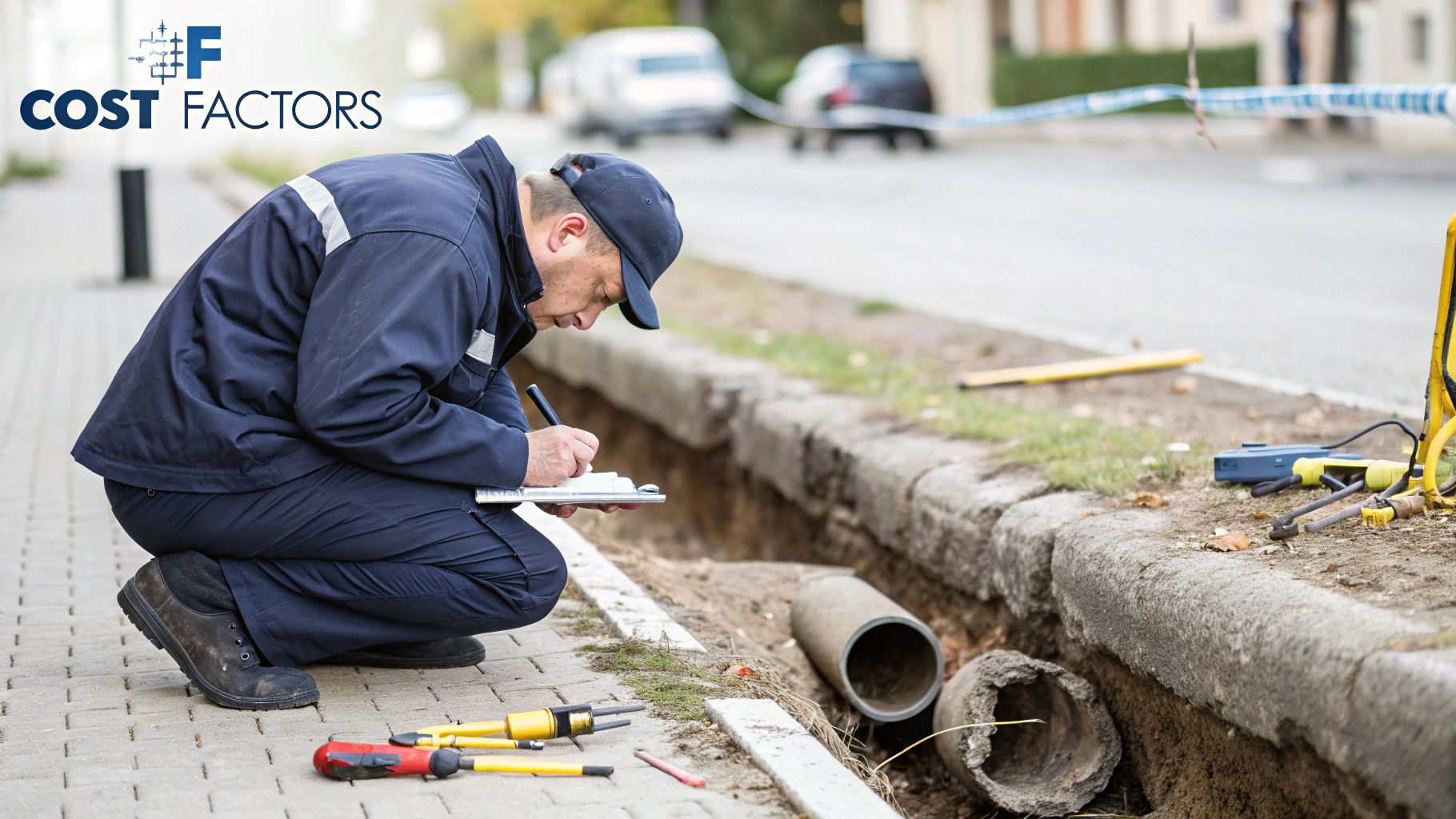
Homeowners facing sewer line replacement often find themselves weighing the pros and cons of trenchless methods versus traditional open-cut excavation. While traditional methods may seem cheaper upfront, a comprehensive cost comparison reveals hidden expenses that can significantly impact the overall project cost.
Unforeseen Costs of Traditional Excavation
Traditional replacement involves digging a trench along the entire sewer line. This disrupts landscaping, driveways, and potentially even nearby structures, leading to significant restoration costs. Homeowners may encounter unexpected expenses for driveway repaving, landscape replacement, or even structural repairs.
Longer project timelines with traditional methods also contribute to higher labor costs. This extended disruption can add stress and inconvenience to daily life.
The Value Proposition of Trenchless Technology
Trenchless technologies, while sometimes having a higher initial cost, minimize disruption and its associated expenses. Methods like cured-in-place pipe (CIPP) lining insert a new pipe within the existing damaged one, reducing the need for extensive digging.
This translates to less property damage, faster project completion, and lower labor costs. The reduced disruption also minimizes the impact on your daily routine. Studies have shown CIPP renewal can be significantly less expensive than open-cut replacement. Savings can reach 57% for small diameter pipes, 63% for medium, and 18% for large.
For small diameter pipes, CIPP methods can cost around $100 per linear foot, while open-cut methods can range from $750 to over $800 per linear foot. This cost-effectiveness comes from minimizing excavation, environmental impact, and associated labor and landscaping expenses. The quicker project completion with trenchless methods further reduces downtime.
Comparing the Total Cost of Ownership
A true cost comparison requires looking beyond the initial quote. Considering potential hidden costs associated with both methods is essential. Understanding the broader scope of plumbing expenses, such as faucet installation costs, can provide valuable context for sewer line replacement expenses.
To illustrate the total cost differences, let's examine the following table:
| Cost Factor | Traditional Method | Trenchless Method | Potential Savings |
|---|---|---|---|
| Excavation & Restoration | High | Low | Significant |
| Labor Costs | High due to longer timelines | Lower due to faster completion | Moderate to High |
| Structural Repairs | Potentially High | Minimal | Significant |
| Project Timeline | Long | Short | Significant |
| Total Cost of Ownership | Often higher due to hidden costs | Often lower in the long run | Varies but potentially significant |
This table highlights how, while upfront costs for trenchless methods might be higher, the potential long-term savings, reduced property disruption, and faster completion often make them the more cost-effective option. Homeowners should consider their property's unique characteristics and long-term budget when making this important decision.
Why Your Zip Code Changes Your Sewer Replacement Bill
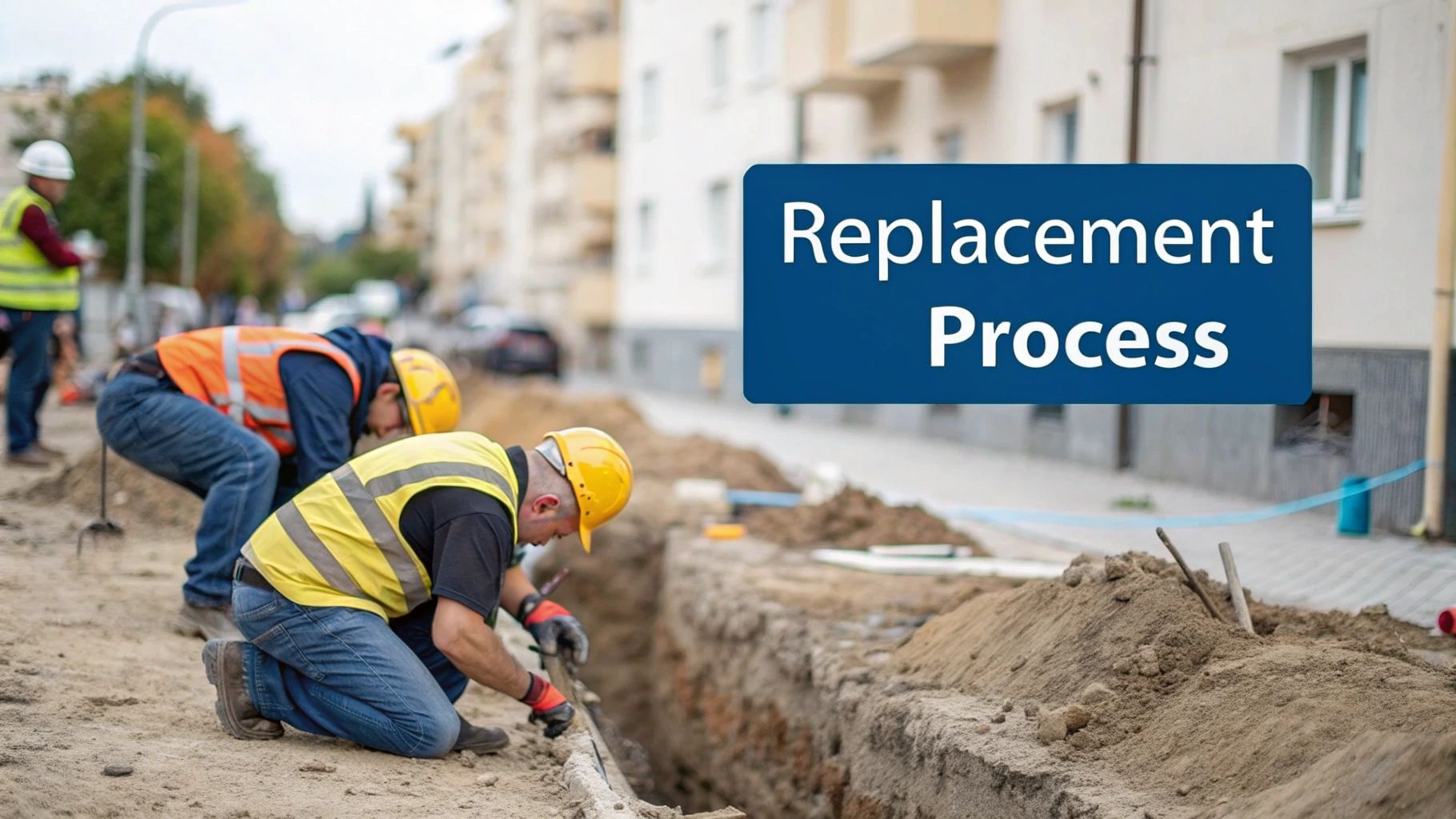
When budgeting for a sewer line replacement, you might assume costs are fairly consistent. However, much like the real estate market, location significantly impacts the final price. Your zip code alone can mean a difference of thousands of dollars for the same project. Let's explore why.
Labor Rates and Local Regulations
One of the primary factors affecting cost is labor. Regions with a higher cost of living generally have higher labor rates for skilled tradespeople, including plumbers. Even if material costs are identical, the labor portion of your bill can vary substantially based on your location.
Local regulations and permit requirements also play a significant role. Some municipalities enforce stricter building codes and have more complex permitting processes. These add time and expense to the project, contributing to regional cost differences. These regulations, while sometimes adding to the cost, are in place to protect homeowners and the environment.
Climate and Soil Conditions
Environmental factors like climate and soil composition also influence sewer line replacement costs. Areas with harsh winters or frequent freeze-thaw cycles often require more durable and expensive piping materials.
Soil type also impacts the excavation process. Rocky or clay-heavy soil is considerably more difficult and time-consuming to excavate than sandy soil, which increases labor costs and overall project expenses.
Contractor Availability and Local Economy
The availability of qualified contractors contributes to regional pricing fluctuations. In areas with high demand and a limited number of contractors, prices tend to be higher. This can be influenced by factors such as population density and the local economy.
Seasonal pricing is another important consideration. During peak seasons for home improvement, typically spring and summer, increased demand can lead to higher contractor prices. Scheduling your sewer line replacement during the off-season could potentially offer some cost savings.
To help illustrate the regional variations in sewer line replacement costs, let's take a look at the following table. It presents average cost ranges across different U.S. regions, comparing both traditional and trenchless methods.
| Region | Average Cost Range | Low End | High End | Price Per Linear Foot |
|---|---|---|---|---|
| Northeast | $5,000 – $10,000 | $3,000 | $12,000 | $150 – $250 |
| Midwest | $4,000 – $8,000 | $2,500 | $10,000 | $125 – $200 |
| South | $3,500 – $7,000 | $2,000 | $9,000 | $100 – $175 |
| West | $4,500 – $9,000 | $3,000 | $11,000 | $125 – $225 |
As you can see, the costs can fluctuate significantly depending on the region. The Northeast tends to have the highest costs, while the South generally has the lowest. It's important to remember these are averages, and your specific costs could vary based on the factors discussed earlier.
Understanding these regional cost influences empowers you to budget effectively for your sewer line replacement project. For more detailed information, you can learn more about sewer line replacement costs here.
Material Selection: Balancing Cost and Longevity
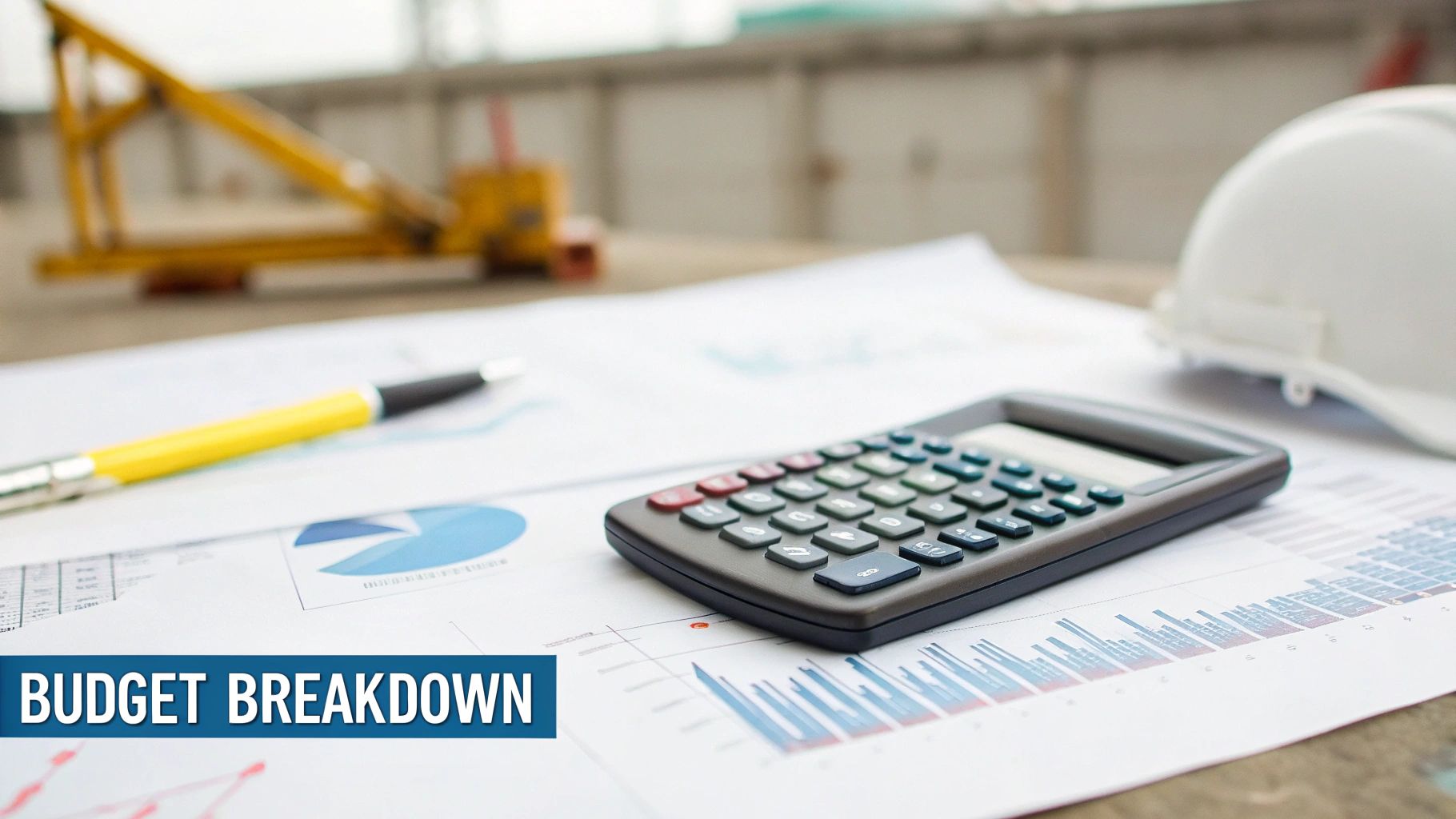
Choosing the right material for your sewer line replacement is a critical decision. It affects both the initial cost and the long-term value of your home. It's not simply about the lowest upfront price. You must also consider the characteristics of each material and how these impact installation, lifespan, and potential future maintenance.
PVC: A Cost-Effective Option
Polyvinyl Chloride (PVC) is often the most budget-friendly choice for sewer lines. Its affordability makes it a popular option for homeowners looking to minimize expenses. PVC is also lightweight and easy to install, which can potentially lower labor costs. However, it's important to note that PVC can be prone to cracking under extreme temperature changes or if the ground shifts.
Cast Iron: Strength and Durability
Cast iron pipes provide excellent strength and durability compared to PVC. They can handle substantial ground movement and temperature fluctuations, making them a good choice for areas with unstable soil conditions. The trade-off is that cast iron is significantly more expensive than PVC and requires specialized installation, which increases the overall cost.
HDPE: Flexibility for Difficult Terrain
High-Density Polyethylene (HDPE) pipe is known for its flexibility. This allows it to adapt to shifting ground and settling, making it well-suited for earthquake-prone areas or locations with unstable soil. HDPE is also highly resistant to root intrusion, a common sewer line issue. If you have trees near your sewer line, HDPE may be a worthwhile investment despite the higher initial cost.
Composite Materials: Advanced Performance
Composite sewer line materials blend the advantages of different materials to provide enhanced performance. These pipes are typically designed for superior strength, durability, and resistance to both corrosion and root intrusion. However, they often come with a higher price tag. Choosing composite pipes means carefully evaluating the long-term benefits against the initial cost.
Installation Complexity and Labor Costs
Your choice of material impacts installation complexity and associated labor costs. Some materials, like PVC, are relatively simple to install. Others, like cast iron, require specialized equipment and skilled professionals, which adds to the project's overall expense.
Lifespan and Long-Term Value
The expected lifespan of each material is crucial to consider when evaluating the true cost. While PVC may have a lower upfront cost, its shorter lifespan might necessitate more frequent replacements over time. Cast iron and HDPE generally last longer, offering better long-term value despite the higher initial investment.
Comparing Sewer Line Materials
This table provides a comparison of the different materials:
| Material | Cost | Lifespan | Installation | Benefits | Drawbacks |
|---|---|---|---|---|---|
| PVC | Low | 50-75 years | Easy | Affordable, lightweight | Susceptible to cracking |
| Cast Iron | High | 75-100 years | Difficult | Strong, durable | Expensive, heavy |
| HDPE | Moderate | 50-100 years | Moderate | Flexible, root resistant | Higher initial cost |
| Composite | High | 100+ years | Moderate | Superior strength, durability | Most expensive |
Choosing the right sewer line material involves balancing your budget with the long-term needs of your property. A qualified plumber, like Essential Plumbing and Electric, can help you determine the best option based on your specific situation and local conditions in Maryland. Understanding these factors helps ensure your sewer line replacement is a sound investment for the future.
The Unexpected Costs That Blow Sewer Project Budgets
That initial quote for your sewer line replacement might seem manageable. However, unforeseen expenses can quickly derail your budget and leave you in a difficult financial position. This section exposes the hidden costs often overlooked, turning a seemingly straightforward project into a potential financial headache.
Beyond the Pipe: Hidden Expenses Add Up
The cost of the pipe itself and the labor involved are significant, but they only represent a portion of the total project expenses. Permit fees, which can vary widely depending on your local municipality, are frequently forgotten. Also, if your project requires inspections beyond the standard procedures, these will add to the overall cost. For instance, some jurisdictions require specific inspections for lines that cross under public walkways or driveways.
Emergency Surcharges and Unexpected Delays
A routine sewer line replacement can quickly become an emergency if the existing line fails completely. Emergency service calls often incur significant surcharges, dramatically increasing the total cost. You might be interested in: How to master…. Furthermore, unforeseen circumstances, like unexpected ground conditions or the discovery of hidden utility lines, can cause project delays. These delays lead to increased labor costs as the project extends beyond the initial time estimate.
Property Repairs: The Domino Effect
Property repairs are a common source of unexpected costs. Excavating to access the sewer line will inevitably disrupt your landscaping. This could mean replacing sections of your lawn, garden beds, or even portions of your driveway and walkways. In more extreme cases, excavation might uncover structural issues with your foundation or surrounding walls, requiring immediate attention and adding considerably to your expenses.
Interior Plumbing Modifications
Sometimes, replacing your sewer line necessitates modifications to your interior plumbing. This can occur if the new line requires different connection points or adjustments to existing fixtures. While these modifications are typically minor, they represent an additional cost that should be included in your budget planning.
Avoiding Budget Blowouts: Proactive Strategies
The most effective way to manage unexpected costs is to anticipate them. Create a contingency budget of at least 10-20% of the initial quote to cover unforeseen issues. Ask contractors specific questions about potential hidden costs before signing any contracts. Inquire about permit fees, the possibility of emergency surcharges, and the likelihood of property damage requiring repairs. This proactive approach can help you avoid unpleasant financial surprises and keep your sewer line replacement project on track. Understanding these potential hidden costs allows you to create a realistic budget and avoid unnecessary financial strain. Choosing a reputable and experienced contractor, such as Essential Plumbing and Electric in Maryland, can also help minimize these unexpected issues. Their expertise allows them to anticipate potential problems and provide solutions before they become costly setbacks.
Smart Financing Strategies for Sewer Replacement
Few homeowners have $10,000 readily available for an unexpected sewer line replacement. This significant cost can be daunting. Understanding your financing options, however, can simplify the process and make it less stressful. This section offers a guide to financing strategies that fit your budget and protect your long-term financial well-being.
Exploring Your Financing Options
Several financing avenues exist for sewer line replacement, each with its own set of pros and cons. Careful consideration is essential. Let's explore some key possibilities:
-
Specialized Plumbing Loans: Some lenders offer loans specifically for home improvements like plumbing repairs or replacements. These loans may offer competitive interest rates and flexible repayment terms.
-
Home Equity Loans/Lines of Credit (HELOCs): If you have equity in your home, you can use it to finance the sewer line replacement. A home equity loan provides a lump sum at a fixed interest rate, while a HELOC offers a revolving line of credit. However, remember that using your home as collateral carries inherent risks.
-
Contractor Financing: Some plumbing contractors offer in-house financing plans. While convenient, these plans can have higher interest rates than other financing options. Carefully review the terms and conditions before agreeing to contractor financing.
-
Municipal Assistance Programs: Some local governments or water authorities offer financial assistance for sewer line repairs or replacements. These programs might provide grants, low-interest loans, or rebates to eligible homeowners. Research your local government's resources to see what’s available.
Understanding the Fine Print
Regardless of your chosen financing option, understanding the terms and conditions is crucial. Pay close attention to these key factors:
-
Interest Rates: Compare interest rates from various lenders to find the best terms. Even a slight difference in interest rates can lead to substantial savings over the loan’s life.
-
Repayment Terms: Consider the loan's duration and your monthly payments. A longer loan term means lower monthly payments but higher total interest paid.
-
Fees and Closing Costs: Be mindful of associated fees, such as origination fees or closing costs, which can add to the total loan cost.
-
Impact on Credit Score: Applying for financing can affect your credit score. Multiple hard inquiries in a short time can lower your score. Choose financing that aligns with your credit profile.
Avoiding Predatory Lending Practices
Some lenders take advantage of homeowners facing emergency repairs. Be cautious of lenders offering loans with extremely high interest rates, hidden fees, or aggressive sales tactics. Compare offers from different lenders, and if something seems suspicious, consult a trusted financial advisor. Learn more in our article about product offerings.
Negotiating with Contractors
When working with a contractor, don't hesitate to negotiate payment terms. Discuss a payment schedule linked to project milestones. This protects you from paying in full upfront before work is finished. Open communication with your contractor builds trust and ensures everyone is on the same page.
Making Informed Financial Decisions
By carefully evaluating your financing options and understanding the costs and risks, you can make sound decisions about your sewer line replacement. Choose a strategy that balances your current budget with your long-term financial goals, ensuring a smooth and financially responsible solution.
Contact Essential Plumbing and Electric today for a complete evaluation of your sewer line needs. We’ll guide you through the process from assessment to financing, offering expert advice and ensuring a reliable, long-lasting solution for your Maryland home. Learn more about Essential Plumbing and Electric.
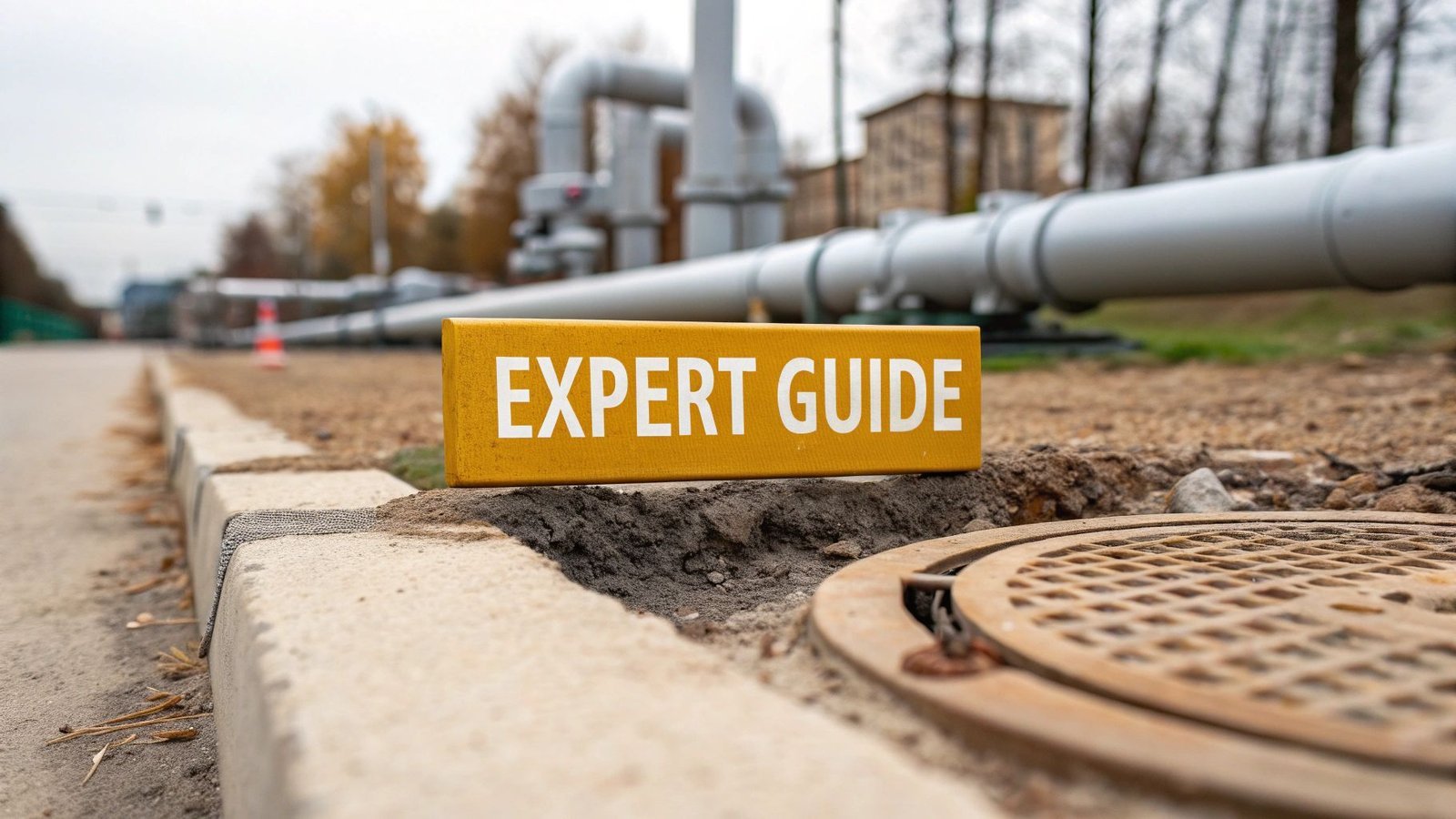
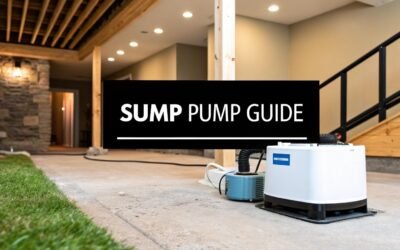

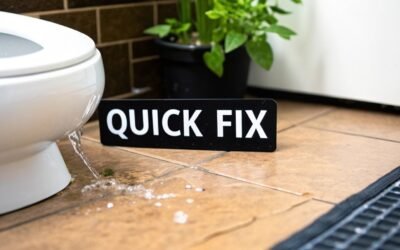
0 Comments